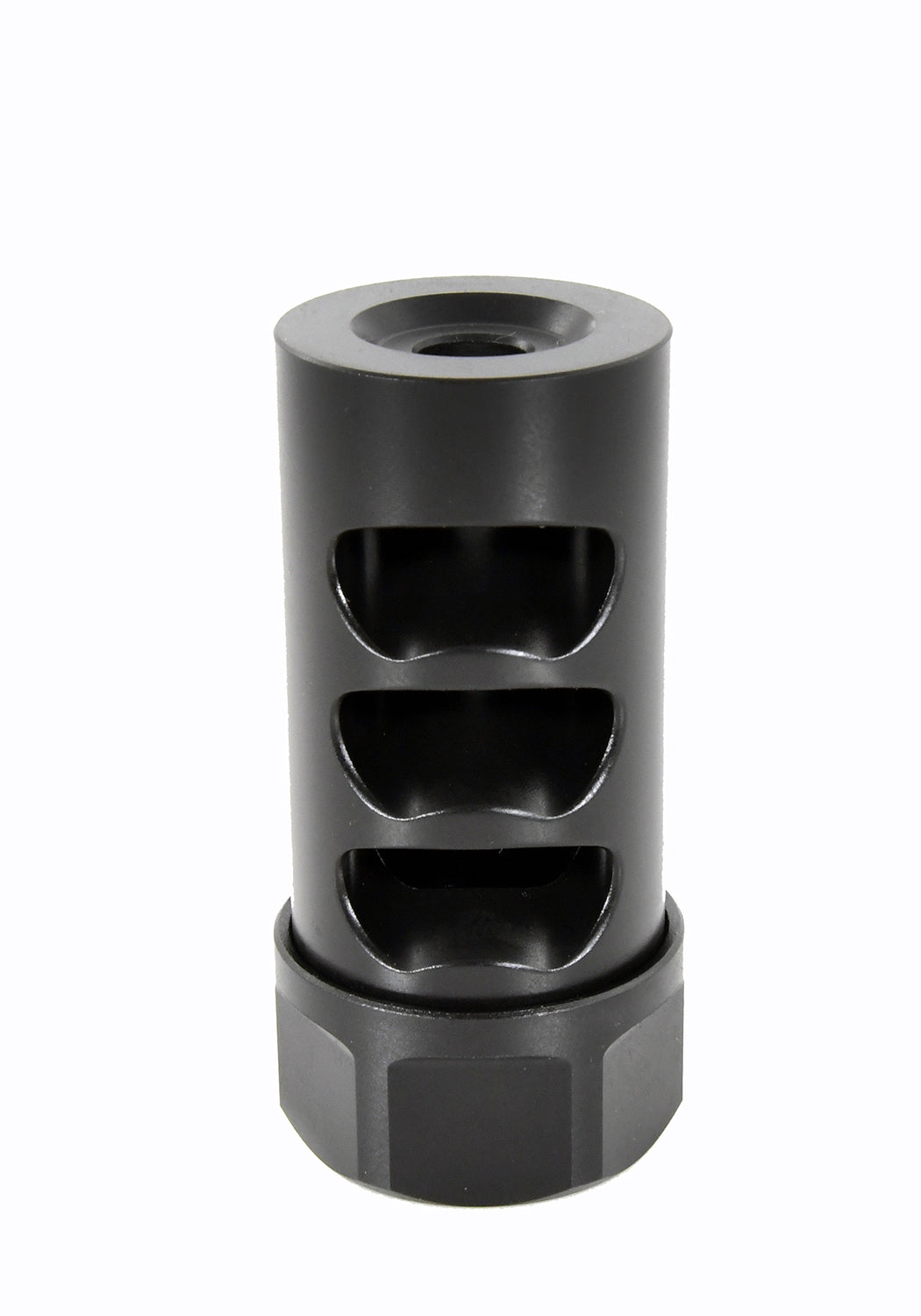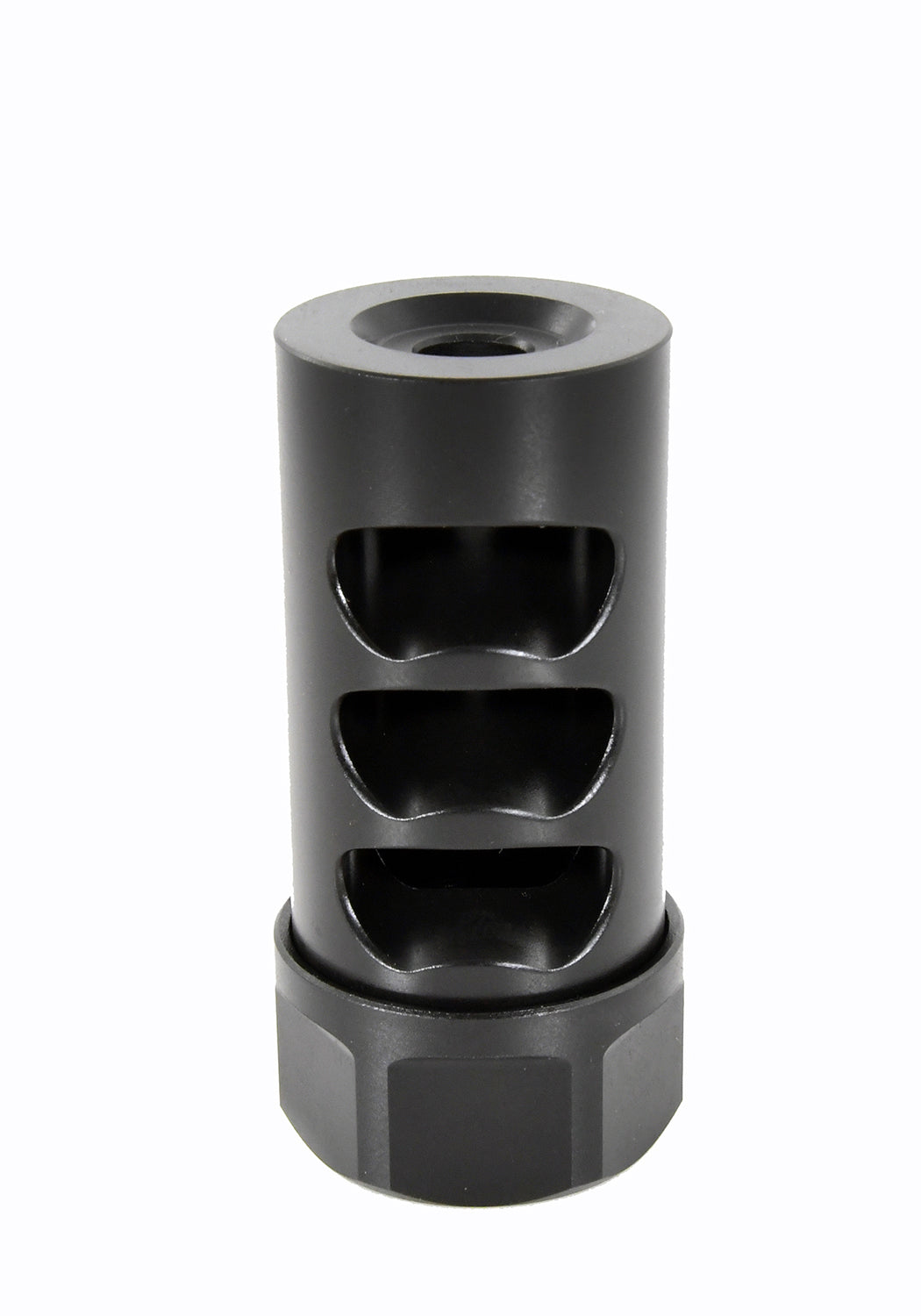
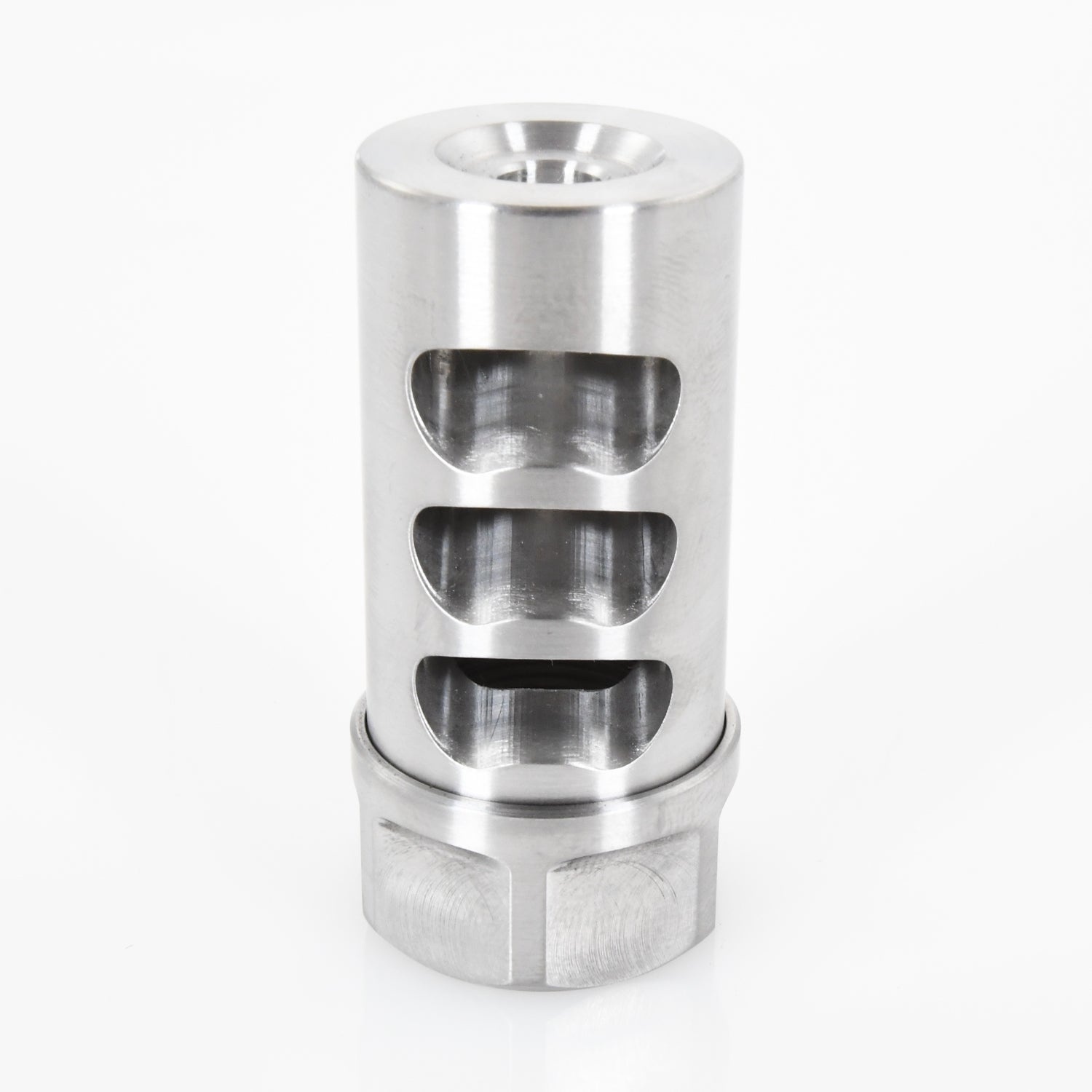
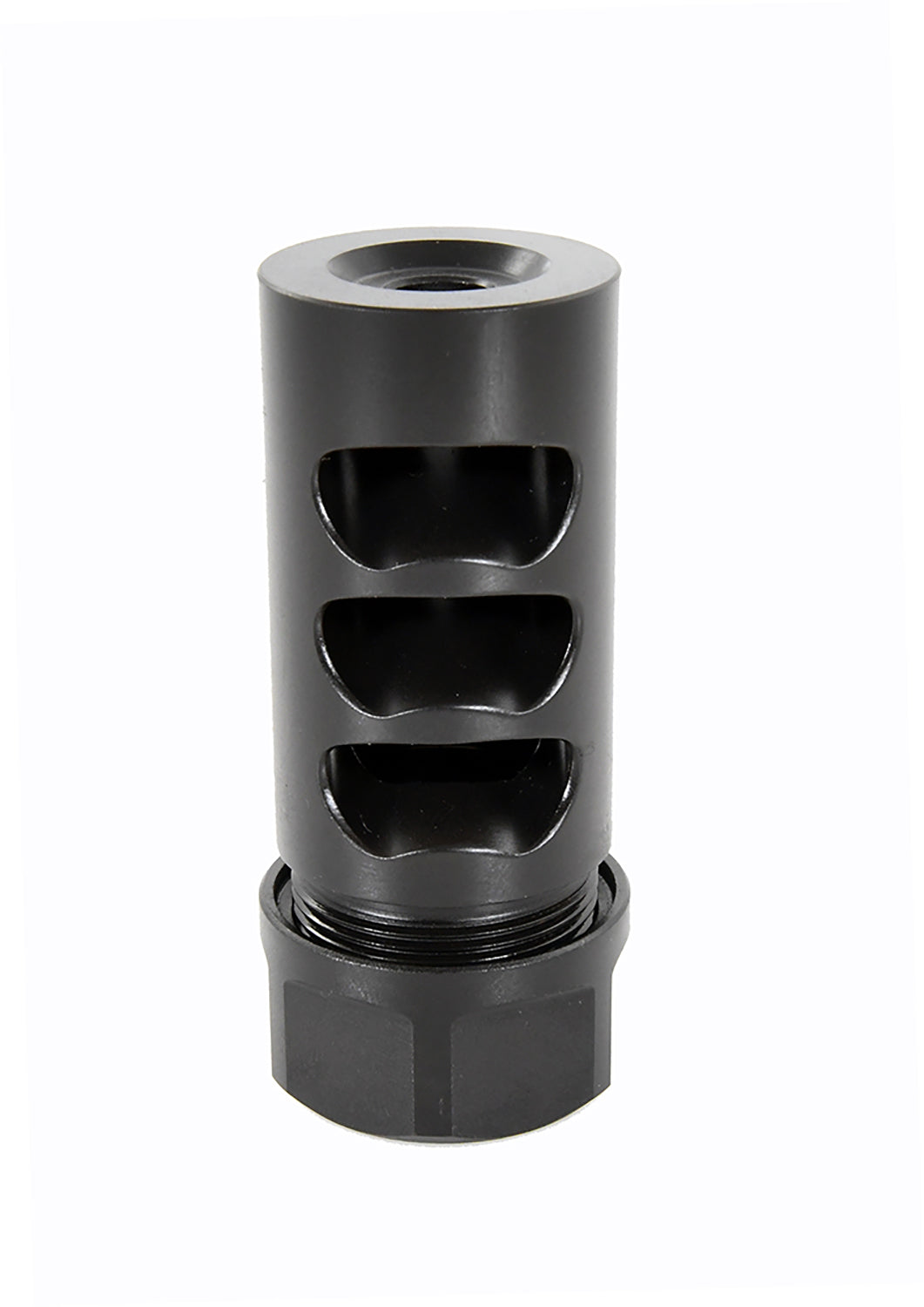
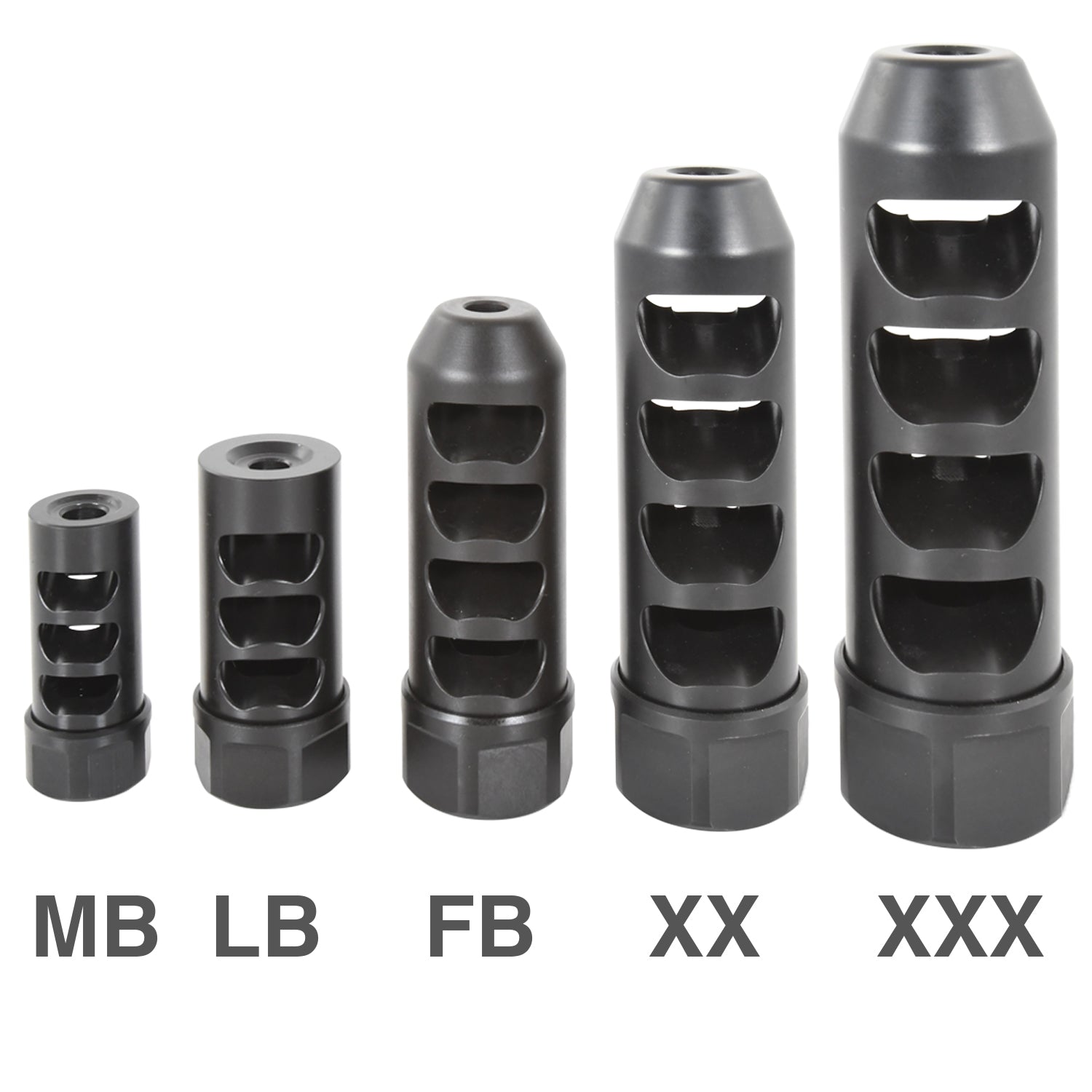
Gen 2 Little Bastard Self Timing Muzzle Brake*
Our muzzle brakes are an industry leader! Our Gen 2 is a two-piece design that allows the shooter to quickly install or remove their muzzle brake for whatever reason. Say goodbye to crush washers, peel washers, or the need for a professional installation. Your hands and a crescent wrench are all that is needed. We offer these brakes in stainless steel or a nitride black finish.
THE GEN 2 LITTLE BASTARD IS BORED TO ACCOMMODATE CALIBERS .308" OR SMALLER SUCH AS 6.5MM, 6MM, OR .223".
The LB is a perfect fit for barrels .750 - 1.0 inch in diameter at the muzzle. This brake is 1'' in diameter. Overall length is 2.225" and weighs 4.2 oz
Click Here For Gen 2 Self-Timing Muzzle Brake Installation Instructions

Maintenance
Routine maintenance of a muzzle brake is essential to ensure proper function and accuracy. Similar to a rifle barrel, a muzzle brake accumulates carbon deposits during use. Over time, these deposits build up in the ports—most significantly in the final port, as the first two are partially self-cleaning due to muzzle blast. Excessive carbon buildup can eventually obstruct the projectile path, resulting in bullet strikes. While this may appear as occasional flyers during general use, it can be detrimental in competitive applications where consistent point of impact is critical. In addition to bullet strikes, carbon accumulation may alter airflow through the ports, leading to shifts in accuracy or point of impact.
Caution: Do not use Lemishine, CLR, or any citric-acid-based cleaner on muzzle brakes. These agents will discolor the black nitride finish and void the product’s lifetime warranty.
Preventative Maintenance
The most effective method is preventative cleaning performed at the same interval as barrel maintenance (approximately every 200–400 rounds, with shorter intervals recommended for 6mm cartridges). Regular cleaning prevents significant fouling and reduces removal effort.
-
Soaking: Place the brake in a carbon cleaner such as BoreTech C4. On black nitride brakes, deposits typically release with minimal effort.
-
Brushing: If necessary, use a non-abrasive cleaning brush to assist with carbon removal. The black nitride finish is harder than common brush materials and will not scratch; however, raw stainless finishes are more susceptible to scratching and should not be cleaned with stainless steel or other hard-bristle brushes.
Heavy Carbon Removal
If cleaning is delayed beyond ~1,000 rounds, substantial carbon accumulation should be expected in the second and third ports. In these cases:
-
Extended Soak: Submerge the brake in BoreTech C4 for 24–48 hours.
-
Mechanical Assistance: Use a non-damaging pick to remove large carbon deposits.
-
Final Cleaning: Repeat the standard soaking and brushing procedure to remove remaining fouling.


